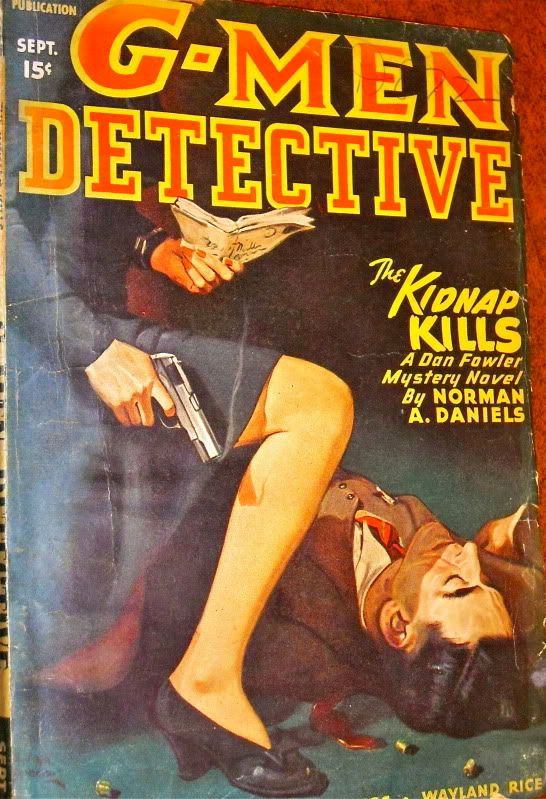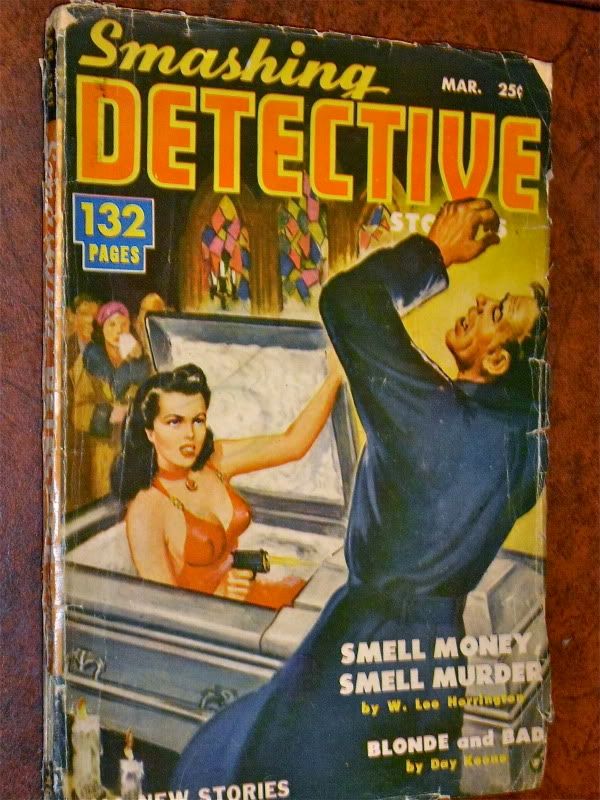This list is tentative because I haven’t nearly finished seeing everything I wanted to see, or felt obligated to see, in 2009. For example, I have little doubt that if I had managed to see either The Cove or A Serious Man they would probably have bumped Up In The Air off the list. Likewise, I haven’t included anything I saw at Fantastic Fest (though I have included two in the honorable mentions section).
I’ll try and be brief here:
1. The Hurt Locker
Possibly the best war drama of the decade, The Hurt Locker follows an elite Explosive Ordinance Disposal team as they try to survive the last 38 days of their rotation in Baghdad. A taut action/suspense thriller, The Hurt Locker is one of the most realistic depictions of modern warfare ever filmed. Written by an embedded journalist and based on factual events, the film is brutal in its authenticity. Every inch of the costume fatigues are stiff with sweat and flies crawl over the eyelids of the actors. The gunfights and bomb defusal scenes are harrowing rather than exciting. Director Kathryn Bigelow (of Point Break fame, and James Cameron's ex) manages to create a film where imminent death seems to lurk in every blind corner and empty window.
Jeremy Renner’s tour-de-force performance as the intense and reckless Sergeant James carries the picture and deserves an Oscar nod. Chalk this up as the best film I saw in 2009, without any question, and one of the most suspenseful movies I've ever seen. It just won the Producer’s Guild of America Award for Best Picture, so consider it a dark horse for Best Picture at the Oscars. (Can you imagine the drama of James Cameron and his ex vying for Best Picture? It's a reason to watch the telecast in itself.) See it, see it, see it. Seriously, go now, it’s out on DVD, you can finish reading this post when you get back.
2. Bad Lieutenant: Port of Call New Orleans
Every five minutes of Werner Herzog’s dreamlike crime drama serves up another steaming mug of “Holy Crap I Can’t Believe I’m Seeing This.” Lieutenant Terrance McDonagh (Nicholas Cage) is the worst kind of bad cop—a drug addict, a thief, a compulsive gambler, a rapist—a demon prince in the hell that is post-Katrina New Orleans. Tasked with solving a multiple homicide, McDonagh tries to close one last case, even as he senses that this is his last circle around the drain before he finally succumbs to madness. Cage goes back to his indie roots with this film, playing the character so over-the-top that his crimes alternate between funny and horrifying. The levels of insanity here are tremendously deep, eventually he begins hallucinating iguanas crawling across crime scenes. See it if you have the stomach.
3. Watchmen
Though it only broke even at the box office, Zack Snyder’s art house superhero film was two and a half hours of cinematic dynamism. Though possibly too dense for the uninitiated, Snyder captured the same cosmological depth as the graphic novel, creating a world that seems more real than most of the places we visit at the movie theater. Best of all, Snyder chose not to talk down to the audience, sacrificing wider accessibility in return for a more active viewing style where audience members had to put together the pieces for themselves. It’s like nothing we’ve ever seen, and nothing we’ll ever see again. (PS: The Director’s Cut made notable improvements to the film.)
4. In The Loop
Developed from the British TV series The Thick of It, In The Loop sets itself up to be the Doctor Strangelove of the 2000s (or Naughts, or Aughts, or Naughty Aughts, or however, you want to style them) and it’s a testament to the film’s success that I’m actually considering whether that might be the case. Shot like a documentary, the film follows British Minister for International Development Simon Foster, who is swept up on the Washington warpath after departing from the party line in an interview, and stating that a proposed war in the Middle East is “unforseeable.” Bounced as a political pawn between Republicans, Democrats, irate constituents and his own country’s civil service employees, the hapless Foster sinks in way, way over his head in a town that manipulates everyone and forgives no one. Peter Capaldi gives the standout performance as Malcom Tucker, the Prime Minister’s Scottish “enforcer” who weaves chains of obscenities so intricate they’d make R. Lee Ermey’s Gunnery Sergeant Hartman blush. Don’t miss this one.
5. District 9
Thank you Neill Blomkamp, thank you for delivering an original, high-concept science fiction film that uses its fantastic setting to deal with real-world issues. This movie made me connect with the plight of South Africa under apartheid more than Invictus, which is no mean feat, since Invictus was a hell of a movie too. That’s what good sci-fi does though, it sneaks past your guard and sucker punches you. It approaches problems from a different angle and allows you to look on the world with fresh eyes. Added to that, we finally got to see some genuine Starship Troopers-style power armor! Dear Lord, I’ve been waiting ten years to see someone do that. Kudos, Neill Blomkamp, your giant robot suit beats James Cameron’s hands-down.
6. Inglourious Basterds
There’s been so much written about Inglourious Basterds that it’s hard to think of something original to say, though I find it telling that Tarantino’s madcap, highly inaccurate World War II epic is actually better than most period-accurate films about the War. As is standard for QT’s movies, Basterds isn’t really about the War itself, it’s about World War II films, and the culture that’s grown up around them.
While European films look on the War with a sense of melancholy, weaving narratives of desperate hardships and tragedies, American films often depict the war as a grand adventure, with tough American soldiers swooping in like comic book heroes to save Europe from Hitler’s tyranny. The real brilliance of Inglourious Basterds is that it fuses those two traditions, placing the gung-ho Aldo the Apache and his squad of larger-than-life commandos amongst characters from a holocaust drama. In doing so, he says a lot more about the War, and its cultural legacy, than most historical movies dream to.
7. Moon
Before Moon, I thought hard science fiction was a thing of the past. Well it’s back, and in a big way. The plot contains so many great surprises that I’ll restrain myself from explaining it other than this: Sam Bell (Sam Rockwell) is the lone crewman of an automatic mineral mining station on the lunar surface, harvesting Helium-3 to solve the Earth’s chronic energy crisis. Nearing the end of his three-year tour with only video communications from his wife and the station’s AI system GERTY (voiced by Kevin Spacey) to keep him company, Sam begins bug out to see and hear things that aren’t there. Or are they?
Moon is a movie full of ideas with the feel of old hard sci-fi dramas like 2001 and Solaris. It even bogarts their look, using models instead of CGI for the lunar station and its moon rovers. The models actually make the lunar surface seem much more realistic, they’re not overly detailed, and by God, they have weight, unlike CGI objects, that always seem to defy gravity. I can’t tell you why Rockwell is such a joy in this, but believe me, he is. Can someone give this man an award please?
8. UP
Another movie that needs little introduction, UP is a delightful return to the pulp boy’s adventure stories I sucked down as a kid. Airships, lost ecosystems on sky-high plateaus, talking dogs, and giant silly birds—if that was the only thing this film had going for it, it would still be the best kid’s movie of 2009.
However, it also contains the most touching four-minute romance story I’ve ever seen. If you’re not borderline bawling by the end of the Elle and Carl montage, you need to take a Voight-Kampff test because you're surely a replicant. Disney Magic might make princesses into frogs and show us incredible musical numbers, but leave it to Pixar to create something so poignant from an everyday story. Who else would front end a children’s movie with something so meaningful? Who else could make us care about characters so intensely in under ten minutes that we're reduced to tears?
9. Avatar
Screw the haters, this is an incredible movie. Not the greatest script in the universe, but it gets the job done and is surprisingly adept at juggling the large cast of characters so that everyone has a purpose and clear character objectives. Is it a leap forward in filmmaking? Yes, very much so in a technical sense. As much as the average moviegoer likes to think anything is now possible with special effects, there are several things that are still elusive for CGI artists. James Cameron has now cleared one of the last and largest hurdles in special effects—the creation of animated characters that look convincingly real.
The problem is that our brains are so well-trained at recognizing what real beings of flesh and blood look like, it’s nearly impossible to fool us with any sort of artificial life, but Cameron at least makes us suspend that disbelief for awhile. The Na’vi have shifting irises, they have chests that move with breath, and they have muscles that bunch and slide underneath their skins. As an audience, we can tell them apart by facial features, an amazing feat, yet we’re so desensitized to cinema magic that the average moviegoer dismisses the amount of artistry that it took to create these wonderful creatures.
The environments too are a triumph of artistic concept, mixing the bioluminescence of the deep sea with the topography of a triple-canopy rainforest. If you saw Avatar and doubt that it was a leap forward, I want you to think about the last time you felt pity, or joy or any strong emotion at all for a photo-realistic digital creation. There’s a reason Lucas confined Jar-Jar to pratfalls.
10. Up In The Air
Make no mistake: this is a corporate horror film. Timely and diabolical, Up In The Air is a bleak, bitterly funny drama about how our personal relationships are increasingly defined by technology. The main action of the story, for example, centers around a man whose job makes him travel around the country to lay off unneeded workers. He’s good at his job, and often is able to let his subjects down easy, taking some of the stress out of the experience. He’s developed a system that works, until a newly-minted graduate comes along and convinces his boss that they could cut costs by firing workers remotely by webcam.
Many of the conversations during this film, especially the key emotional scenes, take place over cell phones, text messaging, or webcam. It’s a sort of eternal proxy battle between the three principal characters—in some scenes we almost feel as if they’re keeping their emotions locked down in person so that they can later spill them over the phone or by email. What hope is there for our society, now that we seem to be losing the ability to speak face-to-face? Are there things that social media was just not meant to do? Up In The Air has no answers to these questions, and maybe, as it suggests, there really are no answers. This is a hard movie to like. For all the admiration I had for it, I wouldn’t name it as one of my favorite movies of the year, but the amount of time I’ve spent thinking about it means it belongs on this list.
HONORABLE MENTIONS: The Fantastic Mr. Fox; Invictus, Mandrill (see review below), A Town Called Panic, Coraline, Private Eye (see review below).
Good Enough Movies: LEGEND (1985)
7 years ago



